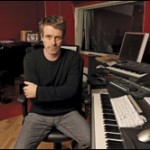The acclaimed Nairn-based actress Tilda Swinton talks to the Arts Journal about her unconventional film career, from her early ground-breaking association with Derek Jarman through to her role in the the forthcoming adaptation of C. S. Lewis’s “Chronicles of Narnia”
ARTS JOURNAL: Tilda, you have been filming in New Zealand on a new version of C. S. Lewis’s much-loved “Chronicles of Narnia” – was that a book that played a part in your own childhood?
TILDA SWINTON: Do you know, it seems to me the world is divided between those who know that book really well and those who don’t, and I had just never read it. I don’t know how that happened. I was aware that it is a kind of talisman for so many people, but I only read it when they asked me to do the film, so I came to it completely fresh at that point.
AJ: That is interesting in itself, coming at it with no real preconceptions?
TS: It is. I’m in the business of reading stories to people these days, and my fairy story literacy at the moment is pretty high. It would probably have been on the list for the twins a bit later, and was maybe a little early for them at this stage, but I read it to them anyway and it passed the test!
AJ: What was the attraction in this role?
TS: The thing that really sparked my interest in making it was that there is a rather anaemic American cartoon version from the 1970s, which starts off with this little American voice saying “we went to stay with the professor”, and it was just all wrong. First of all they weren’t American, and they didn’t go and stay with the professor, they were evacuated during the blitz. This film establishes that background right from the start – this is a group of children who are sent away to a parent-less place, and find this land behind the back of a wardrobe where they can actually make a difference. I found it moving that the film placed that so iconically at the beginning, and that gave me confidence that it was going to be a responsible adaptation, which I think it will.
AJ: You play the wicked White Witch?
TS: I do, and of course she is the epitome of all evil. The White Witch is not even a human – she is the essence of all evil. It is quite a task to think about what is really incomprehensible to small children, and it occurred to me that what they find most difficult is not anger, because children get angry all the time – it is coldness. We built it around that idea, really. She creates coldness everywhere, a kind of perennial winter, and that was the starting point and also the ending point of my work.
AJ: You also took on the role of a fantasy character in your previous film, “Constantine” – is their much difference in creating a “fantasy” made-up character as against a “real” made-up character?
TS: I don’t think there is any difference at all. Every story that you are part of telling is still a construct – even if you are playing someone in a setting that is very realistic you are still making something up, and you have 90 minutes to get across the idea of someone. If you are only in it for a couple of scenes, you have to work really fast, and the point is that it is never a real person you are playing. In that respect playing the White Witch and playing a housewife washing dishes is pretty similar, really. It actually helps when they are not human – it is more honest somehow.
AJ: How did you get on with the director, Andrew Adamson?
TS: Fantastic. He made the “Shrek” films, of course, and they are now among the biggest earning films ever, but he was a first-time filmmaker on our film, because he had never directed a live action film before. He was king of special effects – before he made the “Shrek” films, he was effects supervisor on “Batman”, and he is a computer geek through and through.
AJ: That isn’t an obvious point of connection with your own work, is it?
TS: It was really interesting to me that when we started to talk about this he made it very clear that what he wanted to look at was the reality of the story, and I think people will be interested to see how this first Narnia film is much “realer” than effects films like “The Lord of the Rings” have been. You will get a lot of real people in real heads being real monsters, rather than the kind of scaling up of a set of extras to repeat as a huge crowd, as in “Lord of the Rings”. In that sense I suppose this film is lower-fi, and it was interesting that he of all people was interested in making it real again, having pioneered so much in the effects world. There are only six human characters, but there is relatively little in the way of computer generated effects. That is interesting, because there is so much of that around now that I wonder how children will react to it.
AJ: One thing it has in common with “The Lord of the Rings” is shooting in New Zealand – how did it work out as a location?
TS: It has this fantastic landscape, and it is perfect for Narnia. It was quite extraordinarily apt for us – I suspect people may assume some of the landscapes are actually computer generated images, but that isn’t the case. It looks a bit like a mythical Scotland, actually, and it is quite an extraordinary place. Andrew is a Kiwi himself, and for sure it must have made financial sense, but it was a wonderful place to go and work.


